
The Singapore Armed Forces (SAF) are the military services of the Republic of Singapore, responsible for protecting and defending the security interests and the sovereignty of the country. A military component of the Ministry of Defence (MINDEF), the armed forces have four service branches: the Army, the Navy, the Air Force, and the Digital and Intelligence Service. An integrated force, it is one of the most capable, robust, technologically sophisticated and powerful militaries in Southeast Asia and the surrounding regions. The SAF is headed by the chief of Defence Force, who holds the rank of a Lieutenant-General or Vice-Admiral, and is appointed by the president of Singapore.

The Singapore Army is the land service branch of the Singapore Armed Forces (SAF). The largest of the four branches of the SAF, the Singapore Army traces its origins to the 1st Battalion, Singapore Infantry Regiment, which was formed in 1957, when Singapore was still under British colonial rule. After Singapore's independence on 9 August 1965, the Singapore Army Bill was passed in Parliament on 23 December 1965, and National Service (NS) was subsequently introduced in 1967. Mostly made up of conscripts, the Singapore Army can mobilise all operationally-ready military reservists in the event of war or national exigencies.
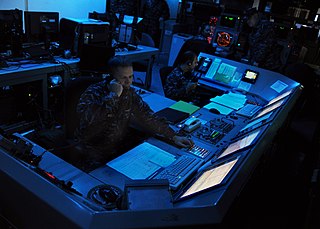
Military operations other than war (MOOTW) focus on deterring war, resolving conflict, promoting peace, and supporting civil authorities in response to domestic crises. The phrase and acronym were coined by the United States military during the 1990s, but it has since fallen out of use. The UK military has crafted an equivalent or alternate term, peace support operations (PSO). Both MOOTW and PSO encompass peacekeeping, peacemaking, peace enforcement and peace building. The People's Liberation Army developed a similar concept based on MOOTW, known as "Non-War Military Activities," which expanded on MOOTW and includes a range of activities characterized as "Confrontational," "Law Enforcement," "Aid & Rescue," or "Cooperative" in nature.

A combat medic, or healthcare specialist, is responsible for providing emergency medical treatment at a point of wounding in a combat or training environment, as well as primary care and health protection and evacuation from a point of injury or illness. Additionally, medics may also be responsible for the creation, oversight, and execution of long-term patient care plans in consultation with or in the absence of a readily-available physician or advanced practice provider. Combat medics may be used in hospitals and clinics, where they have the opportunity to work in additional roles such as operating medical and laboratory equipment and performing and assisting with procedures.

The SAF Military Police Command is the military police formation of the Singapore Armed Forces (SAF). Established as the Singapore Armed Forces Provost Unit (SAFPU) in 1966, its primary role is to police duties to uphold standards of discipline within the SAF, and to provide security coverage for key SAF military installations and the Ministry of Defence (MINDEF) headquarters at Bukit Gombak.

The HQ Chemical, Biological, Radiological and Explosive Defence Group is a group formed by various Singapore Armed Forces (SAF) units to enhance counter-terrorism capabilities and provide an immediate response in the event of chemical and biological incidents.
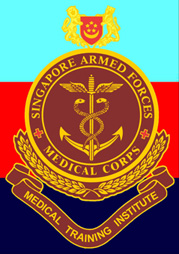
The SAF Medical Training Institute (SMTI) is a military medicine training institute under the Army Medical Service within the SAF Medical Corps. As part of the medical corps, the institute oversees the medical vocational training for SAF service members under the Army, Navy, Air Force, as well as the Singapore Civil Defence Force.
The military ranks of Singapore are the military insignia used by the Singapore Armed Forces (SAF). The SAF has five rank schemes for active and reservist personnel, with a sixth for the auxiliaries of the SAF Volunteer Corps. The SAF has a unique rank structure as an integrated force, ranks are the same in the Singapore Army, the Republic of Singapore Navy (RSN), the Republic of Singapore Air Force (RSAF), and the Digital and Intelligence Service (DIS).
In the Singapore Armed Forces (SAF), specialists are the group of ranks equivalent to non-commissioned officers in other armed forces. This term was introduced in 1993, for a more "positive" rank classification and shorter waiting time for WOSPEC career soldiers' rank advancements. In the SAF, warrant officers are not considered specialists.
A medical corps is generally a military branch or officer corps responsible for medical care for serving military personnel. Such officers are typically military physicians.

The Defence Chemical, Biological, Radiological and Nuclear Centre is a United Kingdom military facility at Winterbourne Gunner in Wiltshire, south of Porton Down and about 4 miles (6 km) northeast of Salisbury. It is a tri-service location, with the Army being the lead service. The centre is responsible for all training issues relating to chemical, biological, radiological and nuclear (CBRN) defence and warfare for the UK's armed forces.

The French Defence Central Health Service is responsible for medical and sanitary support of the French military and of all institutions placed under the authority of the French Ministry of Defence. It is a joint service, and its central administration is under the direct control of the Chief of the defence staff.

The term military medicine has a number of potential connotations. It may mean:
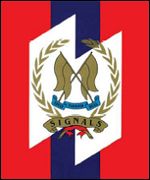
Signals is the formation of the Singapore Army responsible for communications on multiple platforms and local networking on the battlefield. It also supports the Singapore Armed Forces (SAF) by developing the capacity for network-centric warfare in the form of Integrated Knowledge-based Command and Control (IKC2) and Command, Control, Communications, Computers and Intelligence (C4I) operations.

The chief of Defence Force is the head of the Singapore Armed Forces (SAF), who holds the rank Lieutenant-General or Vice-Admiral.
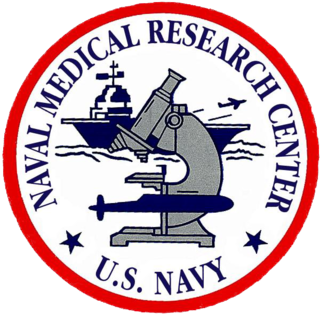
The Naval Medical Research Center (NMRC) is an agency that performs basic and applied biomedical research to meet the needs of the United States Navy and United States Marine Corps. Its areas of focus include study of infectious diseases, biodefense, military medicine, battlefield medicine, and bone marrow research. NMRC is under the United States Department of the Navy's Bureau of Medicine and Surgery.

The Main Military Medical Directorate,. also known as Military Medical Directorate, a successor of Soviet Military Medical Directorate, is the specialist medical corps in the Russian Ministry of defense, it was part of the Soviet Armed Forces. Now it is part of the Russian Armed Forces which provides medical services to all Army personnel and their families, in war and in peace.
Directorate General of Medical Services is a Bangladesh government body under the Ministry of Defence responsible for overseeing the medical services of the defence forces. It is one of seven departments under the Ministry of Defence. The Directorate General of Medical Services provides grading and classification of plans and policies for overall health and medical care for the Armed Forces, annual planning, procurement and control of medical stores and equipment, advanced training of AMC, ADC and AFNS officers at home and abroad and expert pool control. DGMS regulate the Inter-military medical units such as the Armed Forces Medical Institute (AFMI), the Armed Forces Institute of Pathology (AFIP), the Armed Forces Medical Stores Depot (AFMSD) and the Armed Forces Food and Drug Enforcement (ADF). Directorate General of Medical Service (DGMS), is the highest policy making organization of Army Medical Corps, Army Dental Corps and Armed Forces Nursing Services. This Directorate General is also responsible for providing medical service to both serving and retired armed forces personnel, entitled civilian and their families. This office is also responsible for preparing and distributing budget to all armed forces medical units. During any disaster or natural calamity this office plays vital role by providing medical support to the distressed. Major General Mahbubur Rahman is the Director General of Directorate General of Medical Services. Lieutenant Colonel Shafiqul Hasan FCPS is the current Assistant Director General of DGMS.
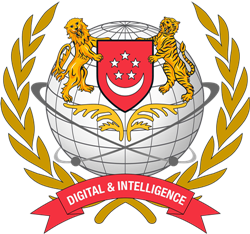
The Digital and Intelligence Service (DIS) is the digital service branch of the Singapore Armed Forces (SAF) responsible in providing military intelligence to the armed forces, building up the country's digital defence, and protecting the psychological defence of its military personnel. It was established on 28 October 2022, in response to the increased number of attacks by non-state actors, and resulting damage from the Russian–Ukrainian cyberwarfare.














